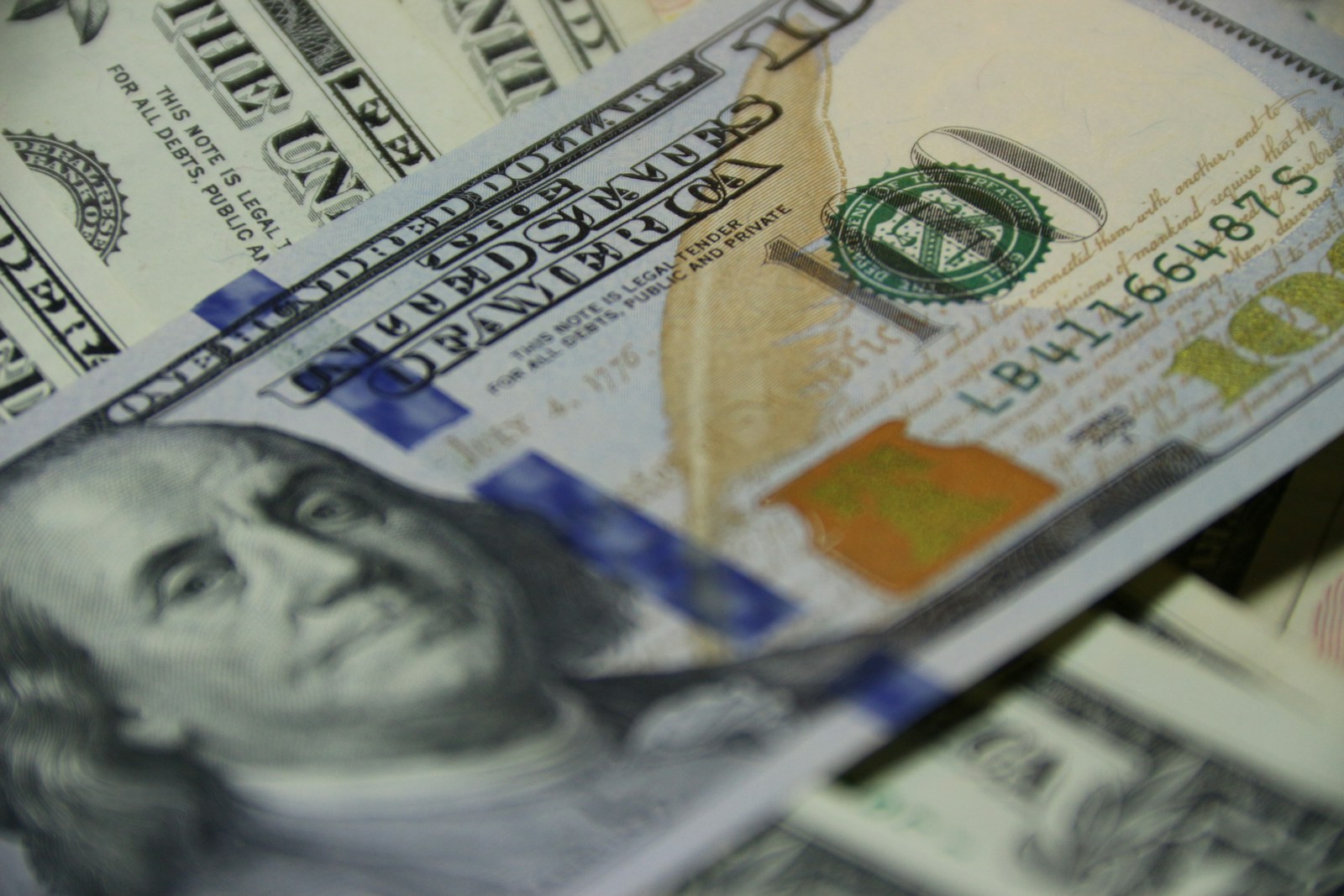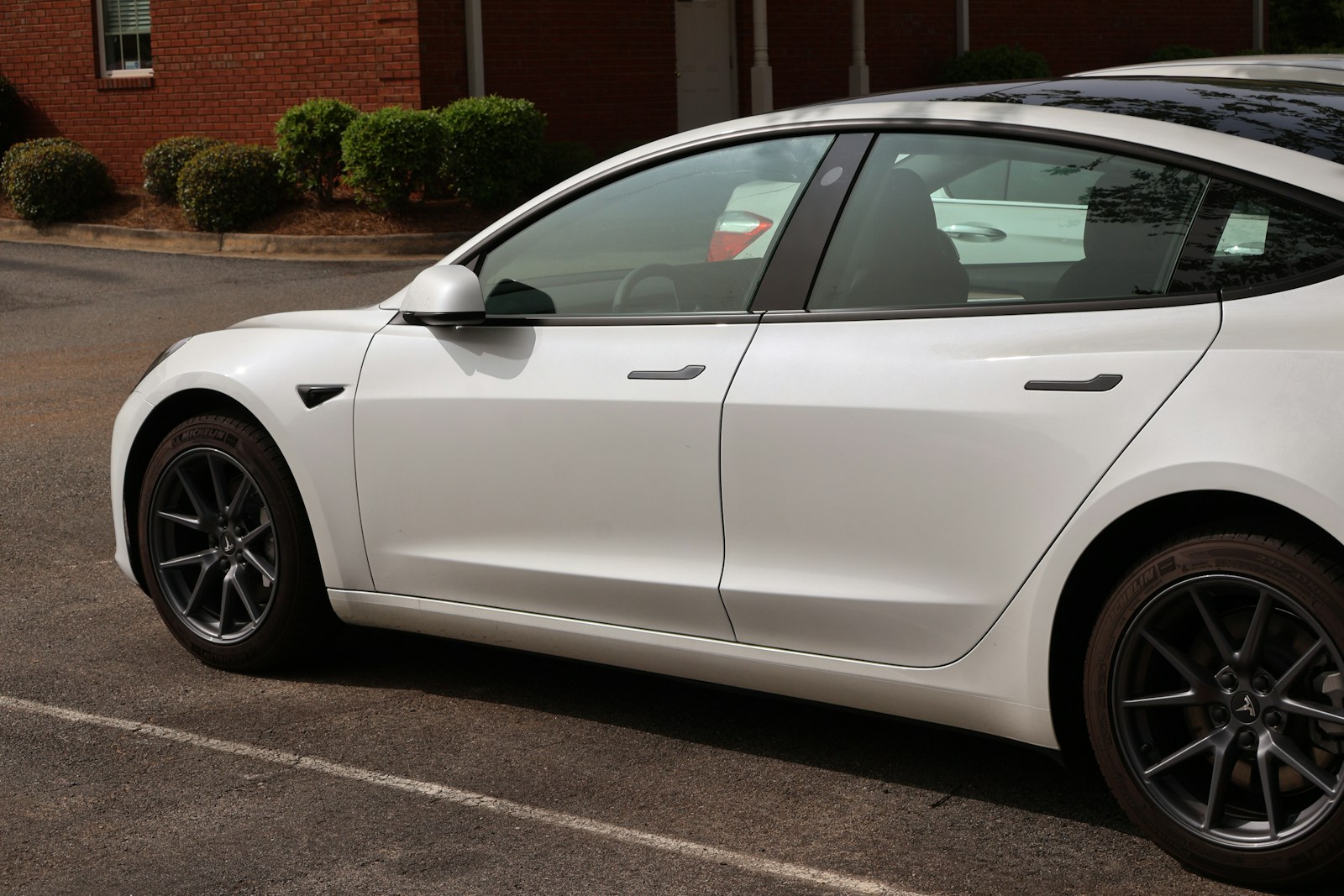The car market in 2025 is turning out to be one of the best opportunities for buyers in years but it’s also a bit more of a feckin’ minefield than before. After the wild ride of supply shortages, dealers acting like car gods, and limited options from 2021 through 2023, things are finally settling down. Manufacturer incentives are back, there’s more metal on the lots to choose from, and buyers actually have some leverage again to tell dealers where to stick their “market adjustments.”
That said, buying a car in 2025 means wrapping your head around some new realities. Interest rates for new cars have climbed to around 9% (cheers, inflation), electric vehicles now make up nearly a fifth of all sales, and financing options have changed in ways that could either help your wallet or empty it faster than a night out in Temple Bar. Whether you’re buying your first motor or upgrading to something that won’t break down every second Tuesday, this guide is packed with no-bullshit insights to help you find the right car at the right price.
Key Takeaways
- The 2025 car market offers decent opportunities thanks to returning manufacturer incentives and dealers who actually want to sell cars again.
- Financing rates hover around 9% for new cars and 14% for used models, so knowing your credit score matters more than your mother’s opinion on your life choices.
- Getting pre-approved for a loan can give you serious ammunition in negotiations and protect you from dealer financing tricks that’d make a pickpocket blush.
- Late-model used cars, especially those 3-5 years old, strike a brilliant balance between price and not falling apart on the motorway.
- Electric vehicles continue to grow in popularity, supported by better charging infrastructure and tax credits that actually mean something.
- Shopping at the end of the month or year can save you thousands off the sticker price dealers get desperate when quotas loom.
- Always focus on the total out-the-door price, not just the monthly payment, when negotiating — that’s where the real money is hiding.
2025 Car Market Overview

The automotive world has been through more drama than a soap opera recently, bringing both opportunities and headaches for car buyers. Understanding what’s happening in the market will help you avoid getting taken for a ride.
Supply Chain Recovery and Inventory Levels
After years of “sorry, we’ve got nothing” excuses, dealer inventories have bounced back to pre-pandemic levels. That means you won’t face the mental shortages or sky-high markups from a few years ago when dealers acted like they were selling unicorns. Most brands now offer full selections across trims and models, giving you more options and the power to tell them to do one if they’re taking the piss.
With more cars cluttering up the lots, dealerships are actually competing for your business again. The days of paying the full manufacturer’s suggested retail price without a word of protest are mostly behind us. Dealers want to shift metal and hit their targets, so they’re more willing to play ball.
Federal Reserve Impact on Auto Financing
Interest rates are the biggest pain in the arse in today’s market. The Federal Reserve’s crusade against inflation has pushed rates higher, which directly affects how much you’ll cough up on a car loan. Here’s a quick look at typical financing rates based on credit scores:
Credit TierNew Car APRUsed Car APR Excellent (750+)6-8%8-10% Good (650-749)8-12%10-14% Fair (600-649)12-16%14-18% Poor (Below 600)15%+18%+
These higher rates add up like pints at closing time. For example, financing a $30,000 car at 9% APR over five years can cost you nearly $4,000 more in interest compared to the sweet rates we saw just a few years back.
Electric Vehicle Market Expansion
Electric vehicles (EVs) are no longer for tree-huggers and tech nerds — they now make up about 18% of new car sales nationwide. This surge is thanks to better battery tech, more than 60,000 public charging stations scattered across the country, and ongoing federal and state incentives that actually put money back in your pocket.
In states like California and New York, EVs account for over a quarter of all new car sales, driven by strict emissions rules and extra rebates. For many buyers, EVs now offer real savings and convenience as a practical alternative to petrol-guzzling motors.
Manufacturer Incentives Return
With competition heating up and inventories back to normal levels, manufacturer incentives have made a proper comeback. Cash-back deals, low-interest financing, and attractive lease offers are available again, especially on models with plenty of stock or those nearing a model year change.
These incentives can save you thousands, but they often require excellent credit and might only apply to certain trims or packages. Don’t let them convince you these deals are doing you a massive favor — they need to sell cars.
Setting Your 2025 Car Budget

Buying a car starts with a realistic budget that covers all your transportation expenses — not just the shiny sticker price. With interest rates higher than a Dublin penthouse, budgeting carefully is more important than ever to avoid nasty surprises.
Calculate Total Transportation Costs
Your budget should include more than just the monthly car payment:
Monthly Payment Components:
- Auto loan principal and interest
- Car insurance (averaging about $1,895 per year in 2025)
- Registration and documentation fees
- Fuel or electricity costs for EVs
- Routine maintenance and repairs
EV Savings: Electric vehicles typically save over $1,000 a year on fuel compared to gas cars. Keep those savings in mind when comparing costs, especially if you’re weighing a higher upfront price that makes your wallet wince.
Apply the 20/4/10 Rule
Many financial advisors recommend this simple rule for car buying, and it’s not half bad:
- Put down at least 20% to reduce loan costs and avoid owing more than your car is worth.
- Keep your loan term to 4 years or less to limit interest bleeding.
- Spend no more than 10% of your gross monthly income on total car expenses.
Some experts allow up to 15% for higher earners, but going beyond these limits can increase financial risk, especially with higher interest rates and possible repair costs that’ll make you cry.
Account for Rising Insurance Costs

Insurance premiums have gone up due to inflation in parts and labor costs. Get insurance quotes on the cars you’re considering before making your final choice, as rates can vary more than weather in Ireland based on safety ratings, theft risk, and repair expenses.
EVs might have higher collision coverage costs because battery repairs cost more than a small country’s GDP, but they often have lower liability premiums than high-performance gas cars that attract boy racers.
Build an Emergency Fund
Even newer used cars can throw expensive tantrums once warranties expire. It’s wise to keep an emergency fund separate from your car budget to cover surprises without ending up eating beans for months.
Understanding Your Credit Score Impact
Your credit score has a massive impact on what financing options and rates you’ll get. With rates higher overall, having a decent score is more crucial than knowing how to change a tire.
Credit Score Tiers and Rates
Lenders group borrowers by credit quality like bouncers at a nightclub:
Prime (750+):
- Best rates around 6-8% APR
- Access to special financing programs
- Multiple lenders fighting over your business
Near-Prime (650-749):
- Moderate rates of 8-12%
- Decent financing options
- Some promotional deals may apply
Subprime (below 650):
- Rates often 15% or higher
- Limited lenders and tougher terms
- May need bigger down payments or co-signers
Strategic Credit Improvement
If your score is below 650, consider waiting to improve it before buying. Even a 50-point boost can save you thousands over your loan — more than enough for a proper holiday. Check your credit reports, dispute errors early, pay down debts, and avoid new credit applications while shopping.
New vs Used Cars in 2025

Choosing between new and used cars means balancing upfront costs against long-term value, especially now that both prices and financing costs have gone mental.
Advantages of Buying New
- Latest tech and safety: New cars come with the newest driver assistance, infotainment, and safety features that older models lack.
- Full warranty: Typically 3 years/36,000 miles bumper-to-bumper and longer powertrain coverage provide peace of mind.
- Lower financing rates: Manufacturers often offer special low-rate loans for new cars to qualified buyers.
New Car Depreciation Reality
New vehicles lose value faster than your New Year’s resolutions — about 20-25% in the first year and up to 60% over five years. That steep depreciation is the biggest hidden cost of buying new, and it’ll hurt more than stepping on a Lego barefoot.
Luxury cars and less reliable models depreciate even faster, while popular compact and SUV models hold their value better than a good joke.
Benefits of Buying Used
- Lower price and insurance: Used cars cost less upfront and usually have lower insurance premiums.
- Avoid the steepest depreciation: Previous owners absorb the biggest value drops like human sponges.
- Certified Pre-Owned (CPO) options: Inspected, reconditioned cars with extended warranties offer a middle ground between new and used.
Total Cost of Ownership Analysis
Look beyond the sticker price by comparing:
- Purchase and financing costs
- Depreciation and resale value
- Insurance premiums
- Fuel or electricity and maintenance expenses
Tools like Kelley Blue Book and Edmunds can help you estimate these costs to make a smart choice instead of guessing like you’re picking lottery numbers.
Electric Vehicle Considerations for 2025
EVs have become mainstream in 2025, offering real alternatives with incentives and better infrastructure that actually works.
Federal and State Tax Credits
- Federal credit: Up to $7,500, depending on assembly and battery sourcing rules that change more often than fashion trends.
- State incentives: Vary widely — California offers up to $2,000, Colorado up to $5,000, and New York around $2,000. Some states like Texas have no sales tax on EVs, which is mental in the best way.
Charging Infrastructure and Home Installation
There are now over 60,000 public charging stations, including many fast chargers that won’t leave you waiting around like a spare part. Most EV owners also install home chargers, which cost $500-$2,000 to set up.
Range and Model Options
Most EVs now offer over 250 miles per charge, with some premium models exceeding 320 miles, easing range anxiety better than a pint after work.
Popular models include:
- Budget: Chevrolet Bolt successor, Nissan Leaf, Hyundai Kona Electric
- Mid-market: Tesla Model 3, Hyundai IONIQ 6, Ford Mustang Mach-E
- Luxury: BMW i4, Mercedes EQE, Audi e-tron GT
Maintenance and Long-Term Costs

EVs require less routine maintenance and have about 30-40% lower five-year upkeep costs than gas cars. Battery replacement can be costly but is usually covered by warranties lasting 8-10 years, so you won’t be left holding the bag.
Financing Your 2025 Car Purchase
Getting good financing means preparing and shopping around like you’re hunting for the best deal on holiday flights. Even small differences in rates can add up to serious money over time.
Pre-Approval Strategy
- Credit unions often have rates 1-2% lower than banks and offer personal service that doesn’t make you feel like a number.
- Online lenders provide transparency and quick approvals without the runaround.
- Apply to several lenders within a short window to minimize credit score impact.
Dealer and Manufacturer Financing
Many manufacturers offer special low-rate loans (0-3% APR) on select models for buyers with excellent credit. Bring your pre-approval letters to compare and negotiate better terms — it’s like having ammunition in a water fight.
Loan Terms and Interest Cost
Avoid loans longer than 60 months to reduce risk of owing more than your car is worth. Use calculators to compare total costs across terms and rates — the math doesn’t lie, even if salespeople do.
Pre-Approval Best Practices
Secure pre-approval before visiting dealerships to set your budget, gain negotiating power, avoid pressure tactics that’d make a used car salesman proud, and ensure contract terms match what you agreed to.
Research and Shopping Strategy
Doing your homework is key to getting a brilliant deal instead of getting taken for a ride. Use trusted sources like Kelley Blue Book, Edmunds, Consumer Reports, and J.D. Power for pricing, reliability, and safety info that matters.
Get insurance quotes early, as rates can vary more widely between models than pub prices between neighborhoods.
Keep a spreadsheet to compare negotiated prices, financing costs, insurance, maintenance, resale value, and fuel or charging expenses — treat it like your financial bible.
Timing Your Purchase
Timing can save you thousands, so don’t be a mug about it.
- End-of-month and end-of-quarter periods often bring better deals as dealers scramble to meet sales targets like students cramming for exams.
- Weekdays tend to be less mental and better for negotiating without crowds breathing down your neck.
- Holiday sales events can offer promotions but may be busier than a shopping center on Christmas Eve.
- Model year transitions usually mean discounts on outgoing models that dealers want gone.
Negotiation Tactics for 2025

Start negotiations about 10-15% below asking price, backed by market data that proves you’re not taking the piss.
Always negotiate the total out-the-door price, including taxes, fees, and any add-ons they try to slip in like pickpockets.
Negotiate trade-in values separately, armed with independent valuations that show you’ve done your homework.
Get quotes from multiple dealerships to create competition — nothing motivates a salesperson like knowing you’ve got options.
Watch for dealer tricks like payment packing, yo-yo financing, unnecessary add-ons that cost more than your monthly groceries, and bait-and-switch tactics that’d make a con artist blush.
Finalizing Your Purchase
Review all paperwork more carefully than your mother reviews your life choices. Confirm VIN, agreed price, trade-in value, and loan terms match what you negotiated.
Make sure insurance is in place before driving off — don’t be the eejit who gets caught without coverage.
Inspect the car thoroughly for damage or missing features that weren’t mentioned during the charm offensive.
Understand warranty coverage and service requirements so you won’t be caught off guard later.
Keep all documents safe and backed up — treat them like they’re worth their weight in gold, because they are.
Top Car Recommendations for 2025

Based on reliability, value, and cost of ownership that won’t break the bank, here are some top picks:
Sedans
- Honda Civic
- Toyota Corolla
- Hyundai Elantra
SUVs
- Mazda CX-5
- Subaru Outback
- Toyota RAV4
Electric Vehicles
- Tesla Model 3
- Hyundai IONIQ 6
- BMW i4
Luxury
- Genesis G90
- Lexus ES
- Audi A4
Trucks
- Ford F-150
- Chevrolet Silverado
- Toyota Tacoma
FAQ
Is 2025 a good year to buy a car? Yes — inventory and incentives are favorable, but plan carefully for higher interest rates that’ll bite your wallet.
Should I buy new or used? Used cars offer better value, especially late-model CPO vehicles. New cars offer the latest tech and warranties if you don’t mind paying for the privilege.
What credit score do I need? Scores above 750 get the best rates. Improve your credit if below 650 — your future self will thank you.
How much should I put down? Aim for 20% down to reduce costs and risk of being upside down on the loan.
Dealer or bank financing? Credit unions and manufacturer programs often have the best rates. Always compare it’s free money if you do it right.
Best time to buy? End of month, quarter, or year; weekdays; holiday sales when dealers get desperate.
Are EVs worth it? For many buyers, absolutely, thanks to incentives, fuel savings, and lower maintenance that actually adds up.
How to avoid dealer scams? Focus on total price, negotiate trade-ins separately, avoid add-ons that serve no purpose, and never sign contracts you don’t understand.
Buying a car in 2025 means balancing market opportunities with higher financing costs and new vehicle tech that changes faster than weather patterns. With preparation, timing, and negotiation skills that’d make your gran proud, you can get the right car at the best price for your needs. Start by checking your credit, researching vehicles like your life depends on it, and getting pre-approved to maximize your advantage over dealers who think you were born yesterday.





